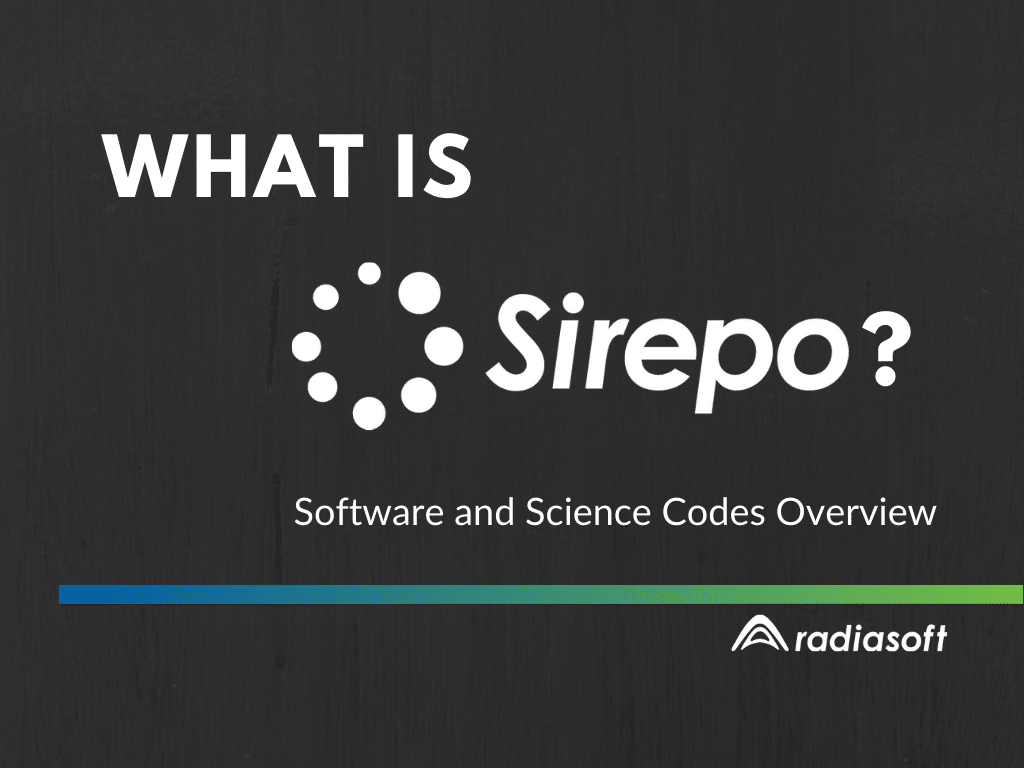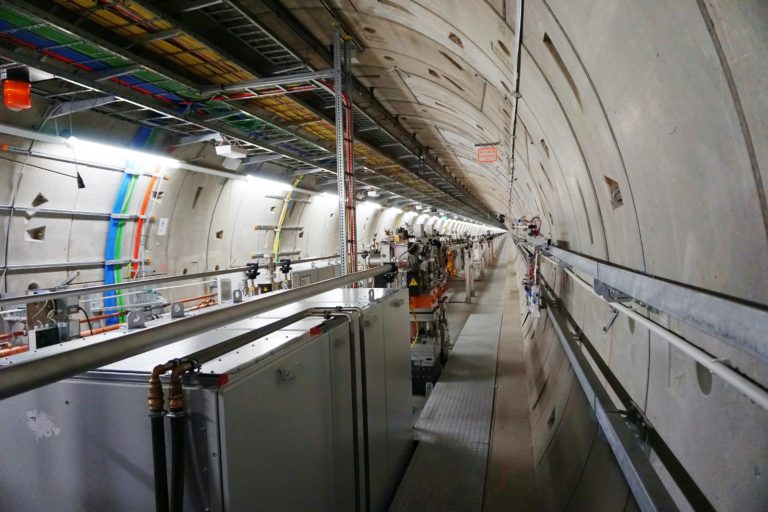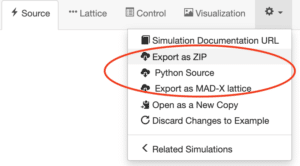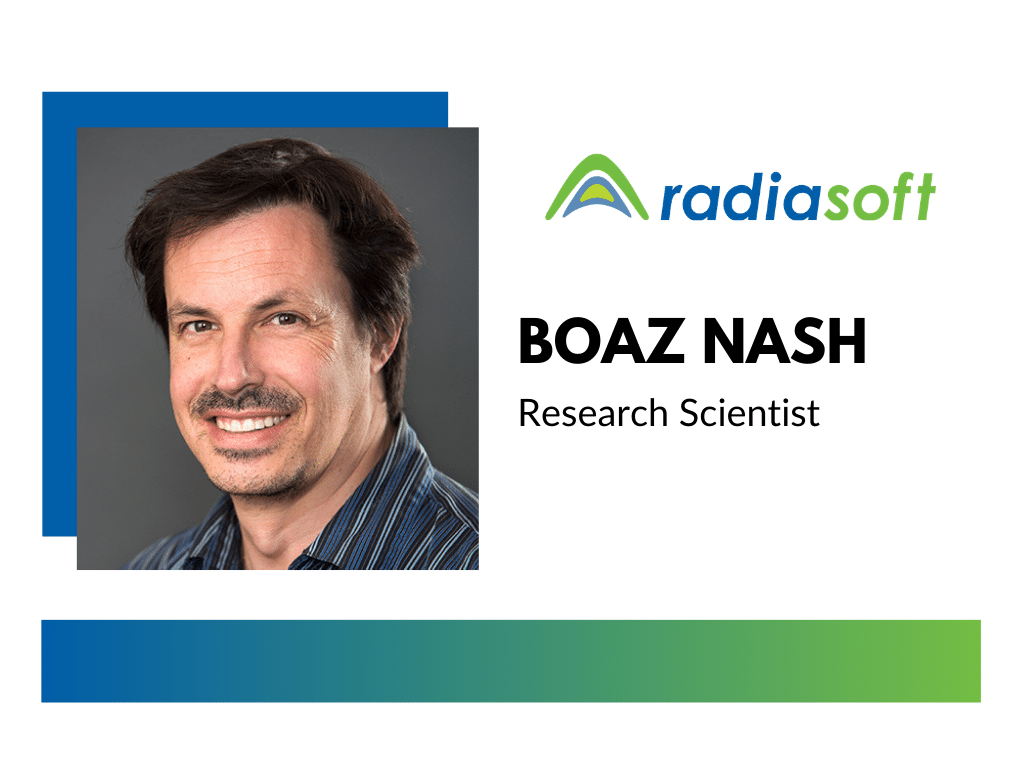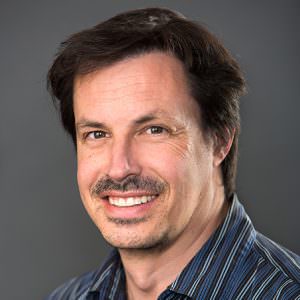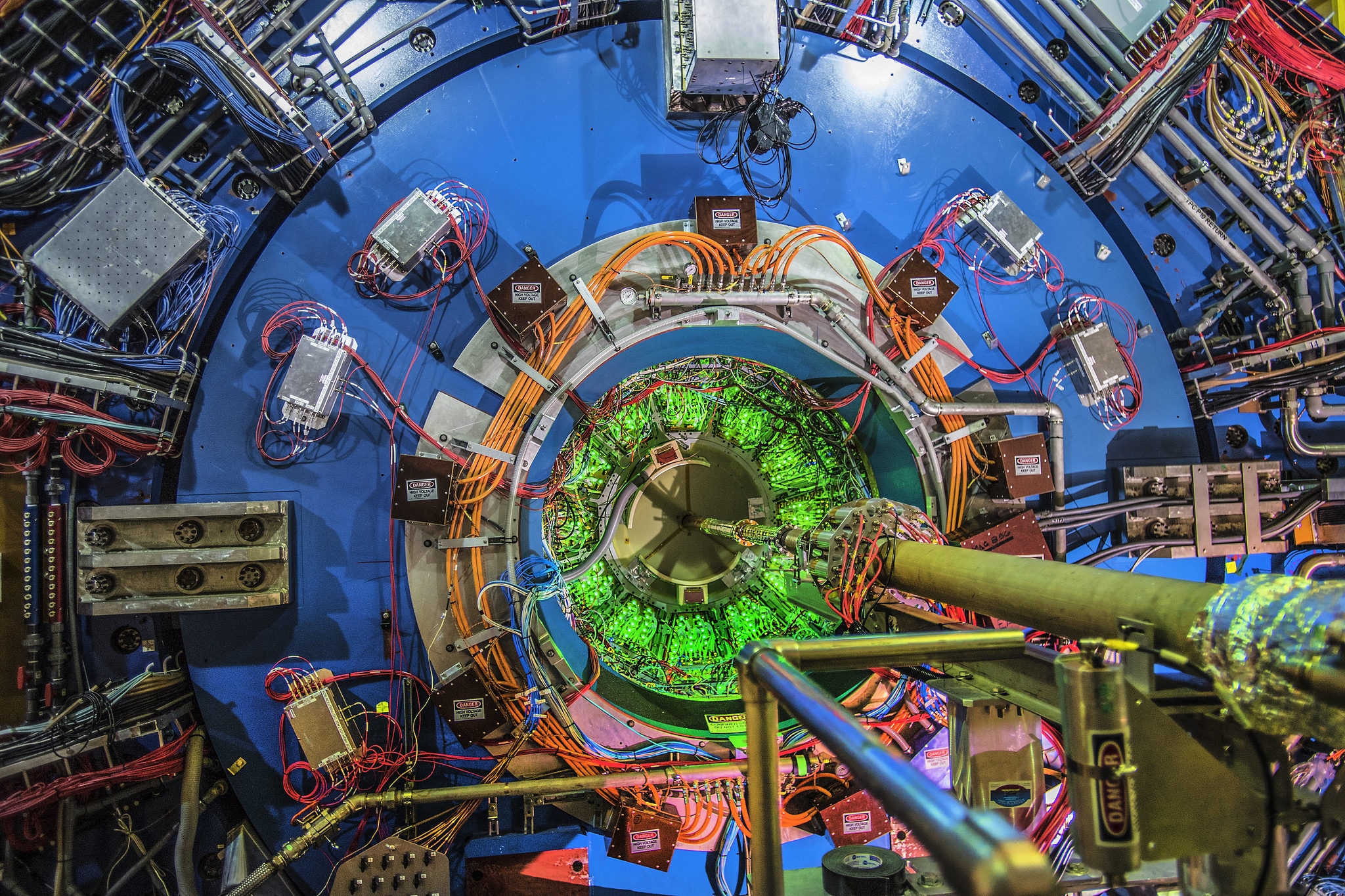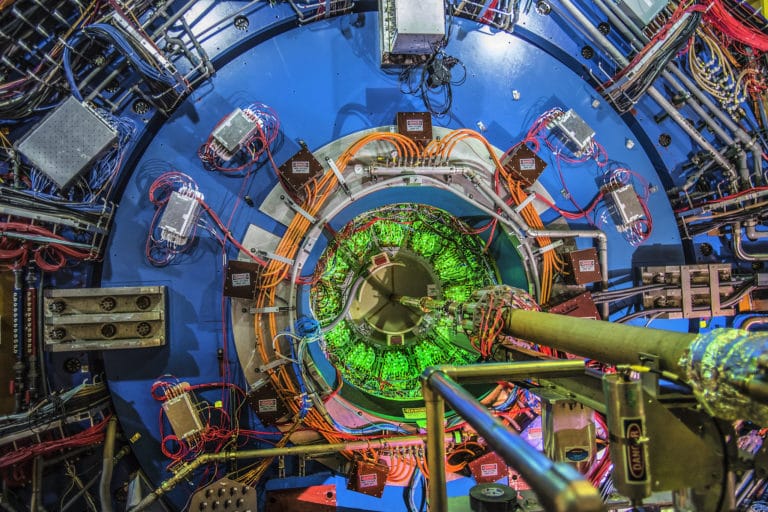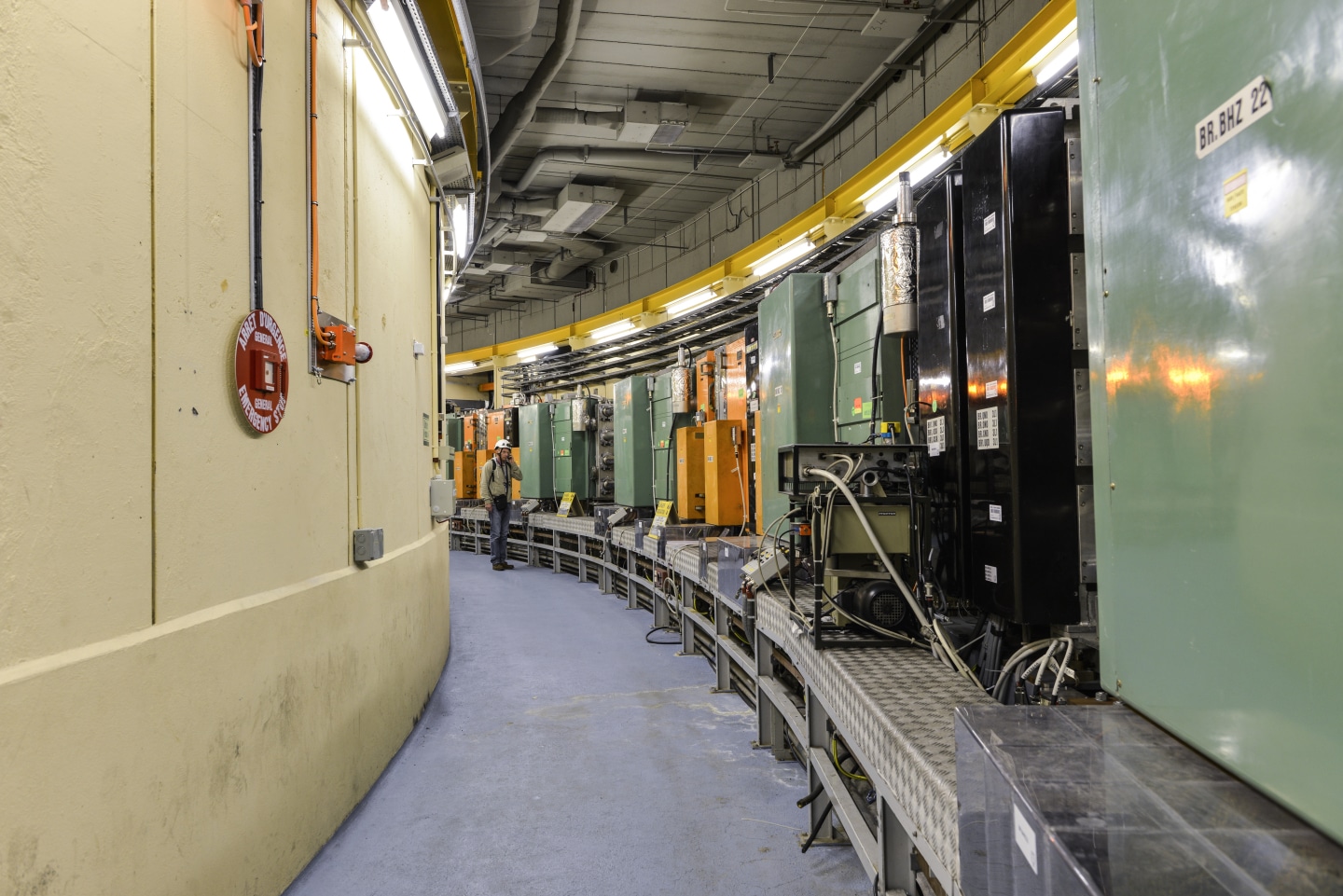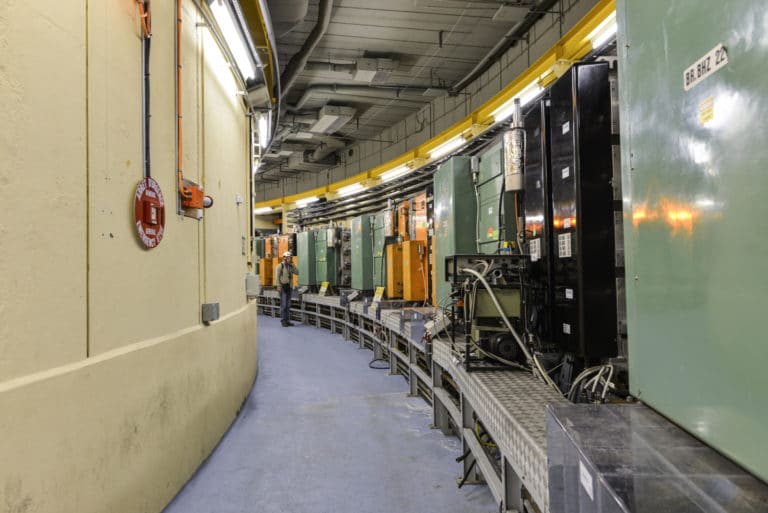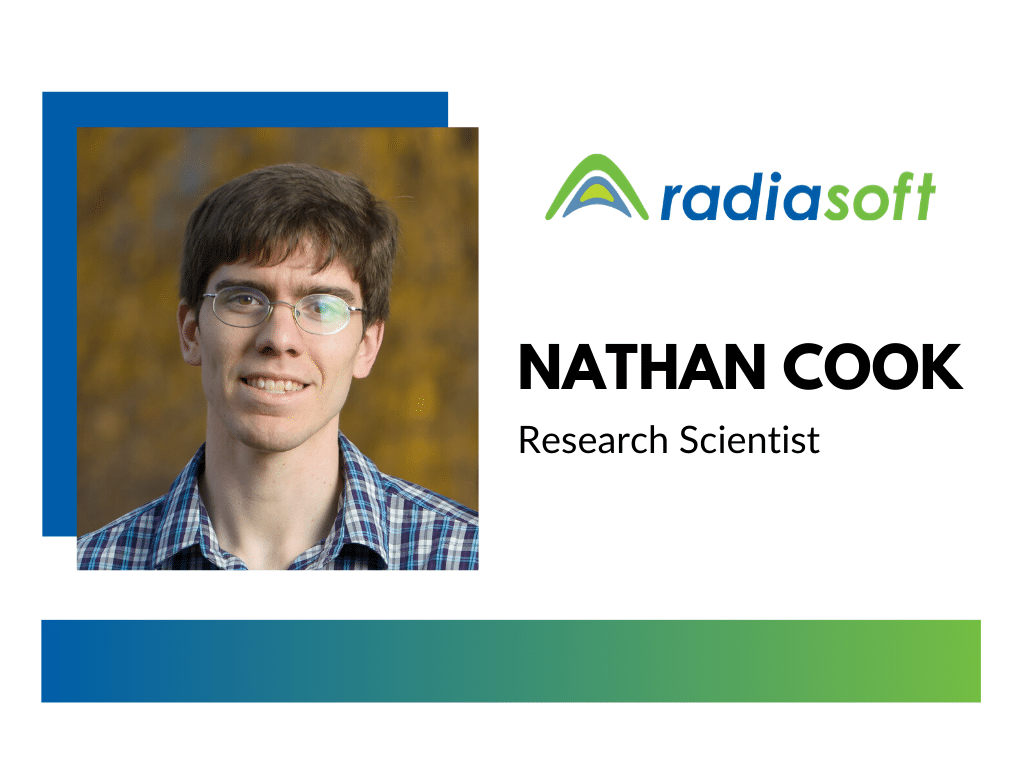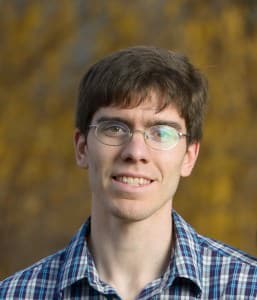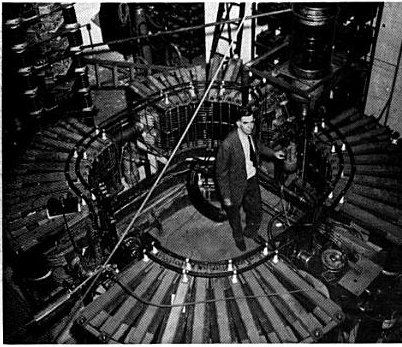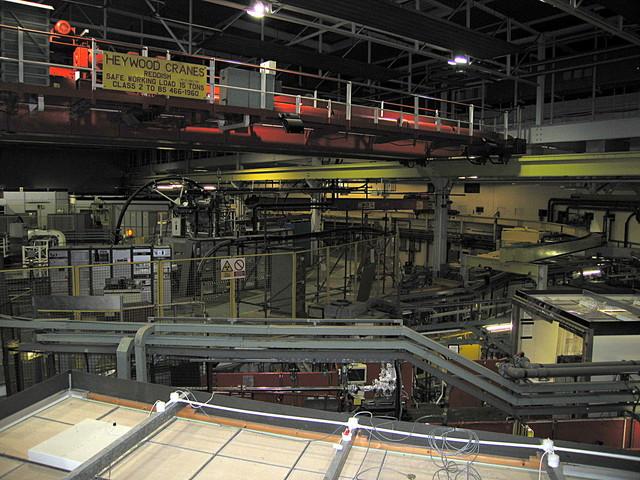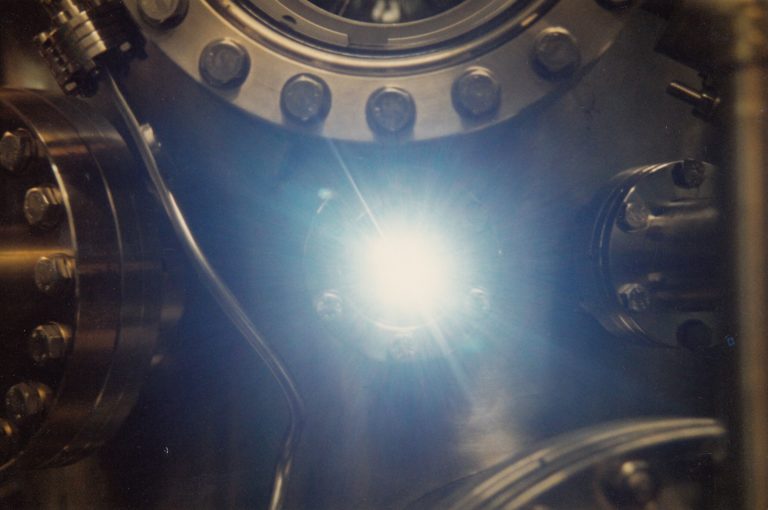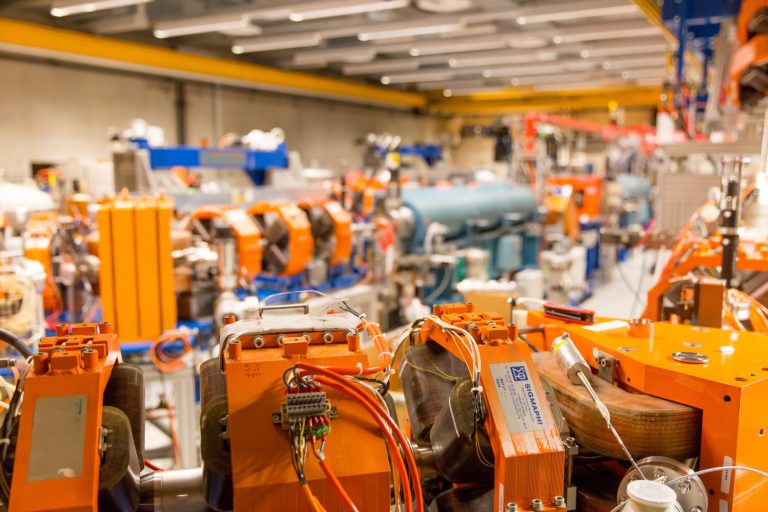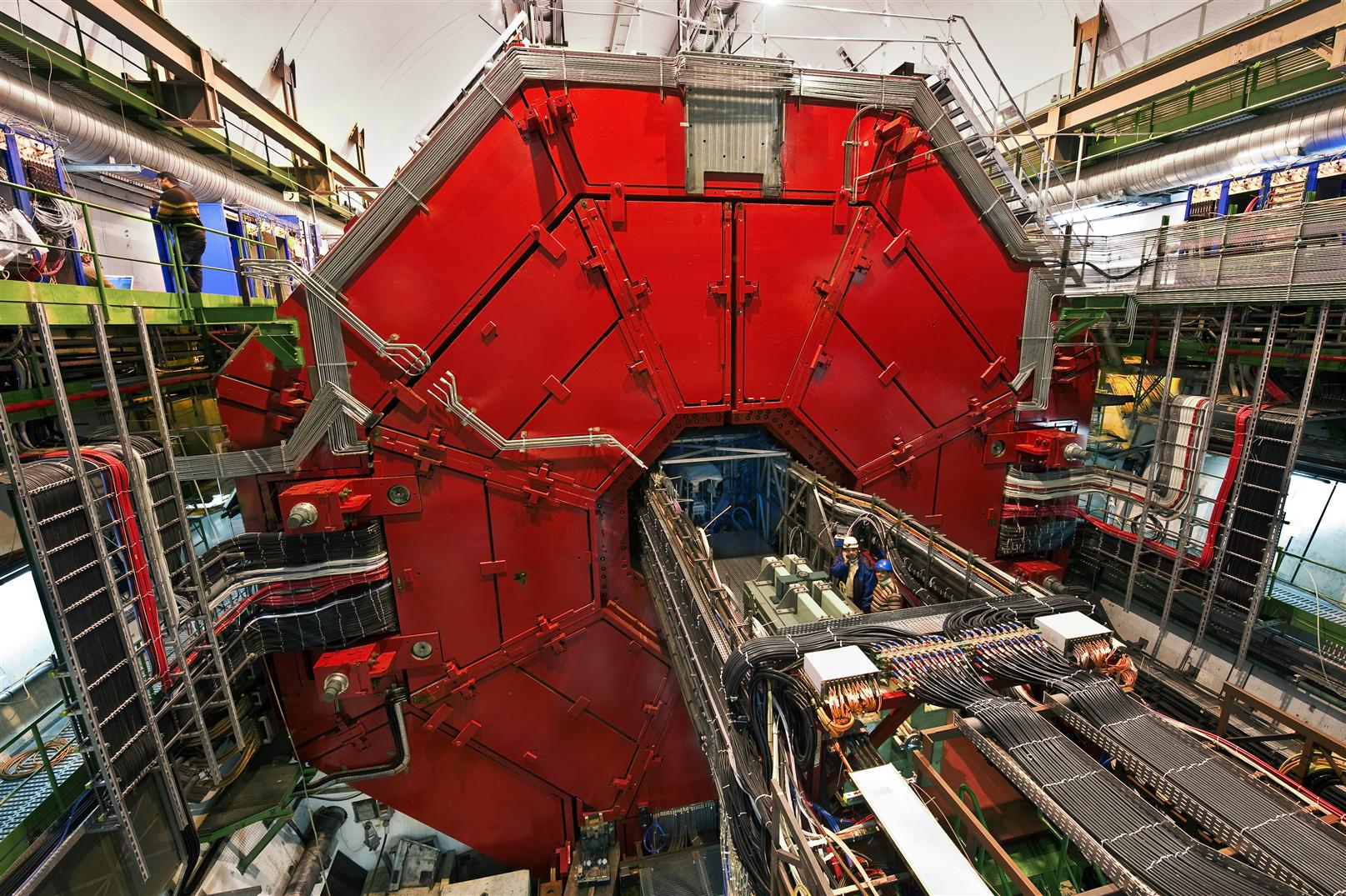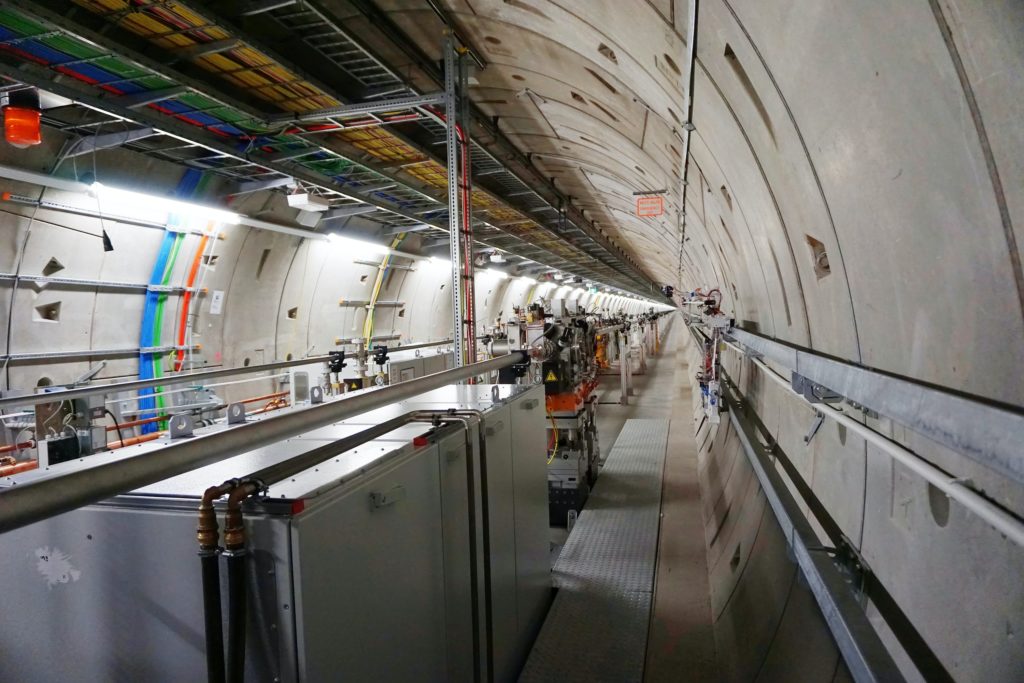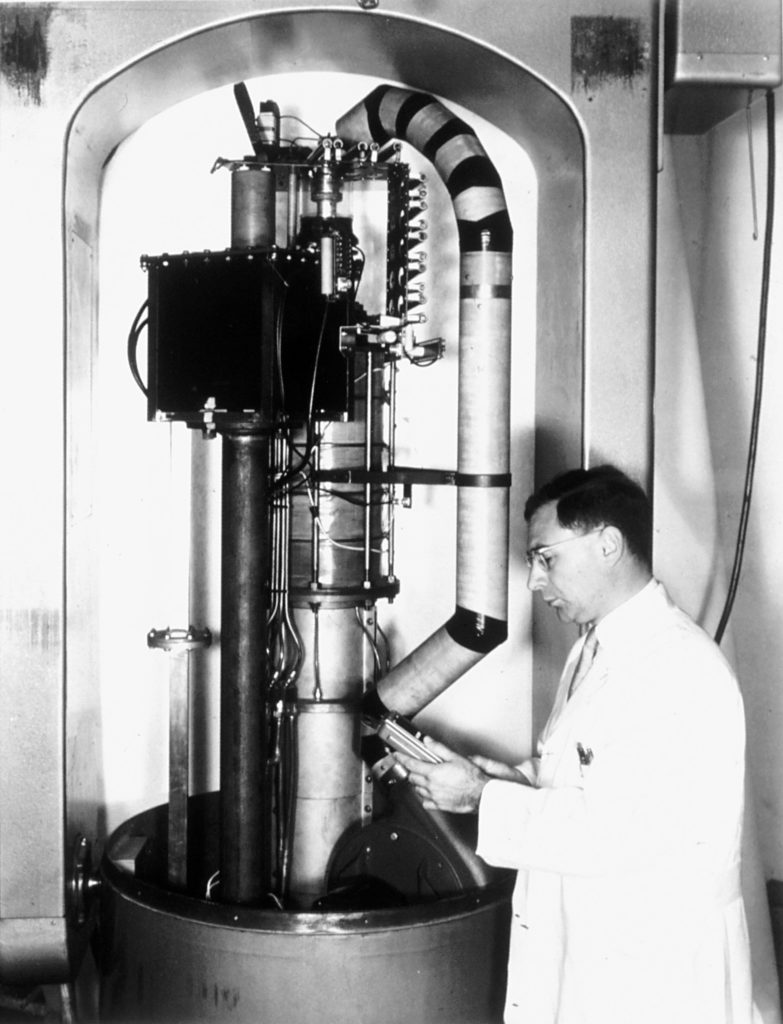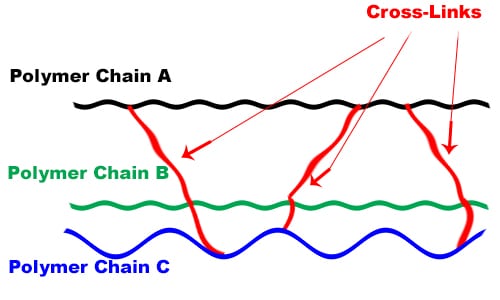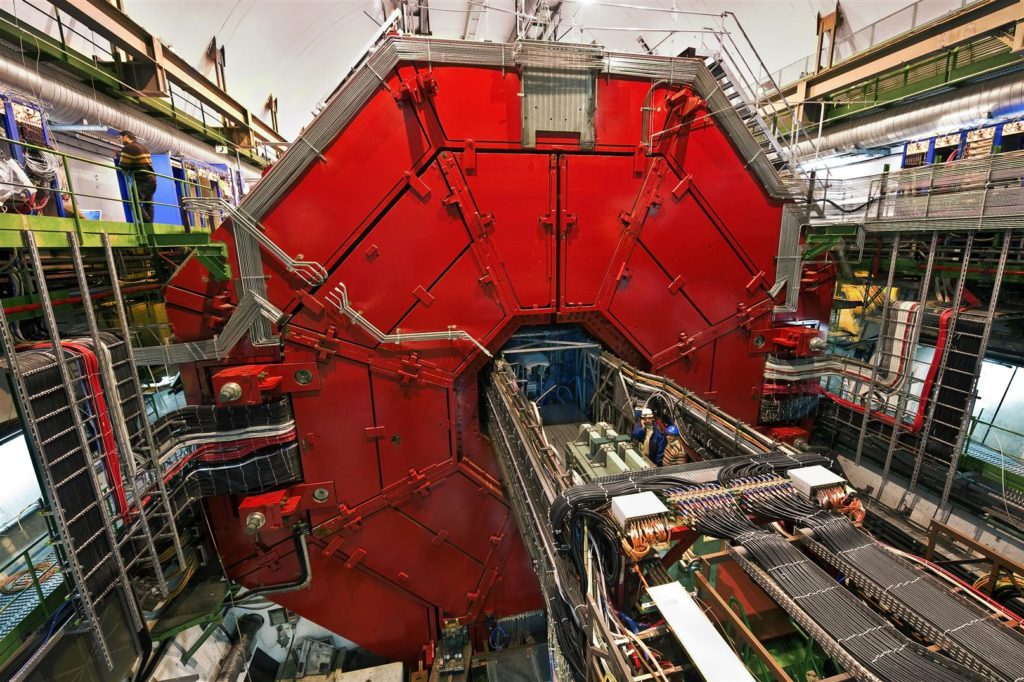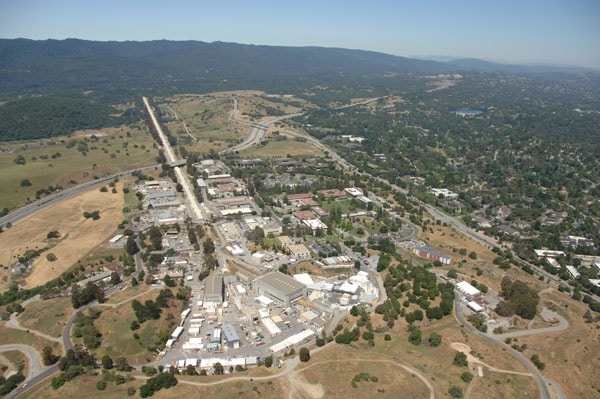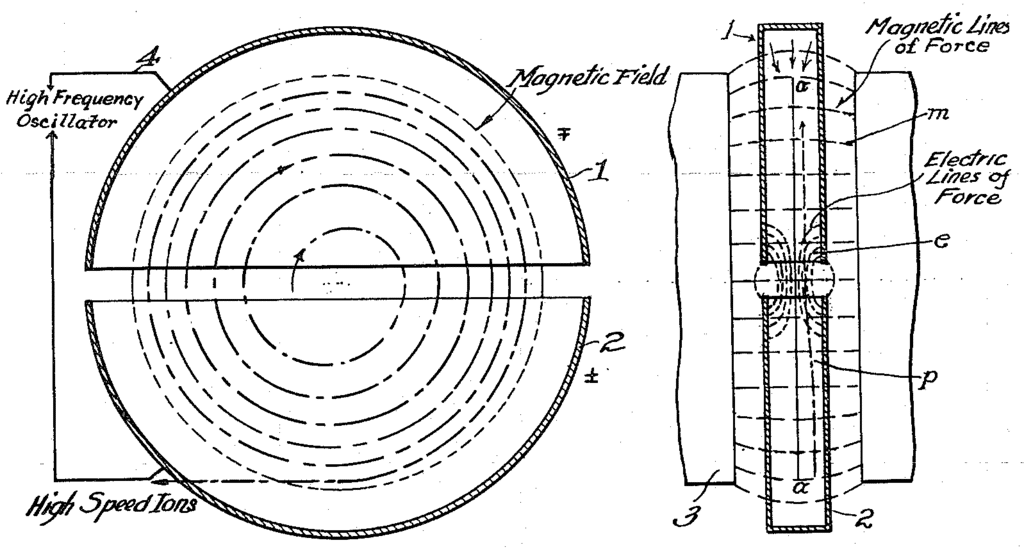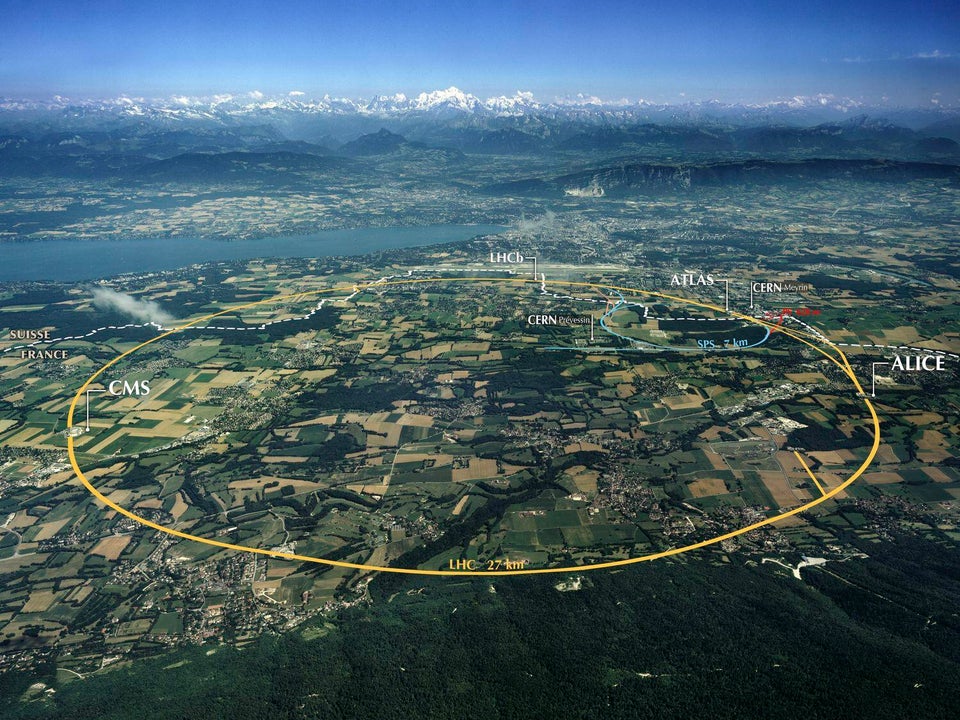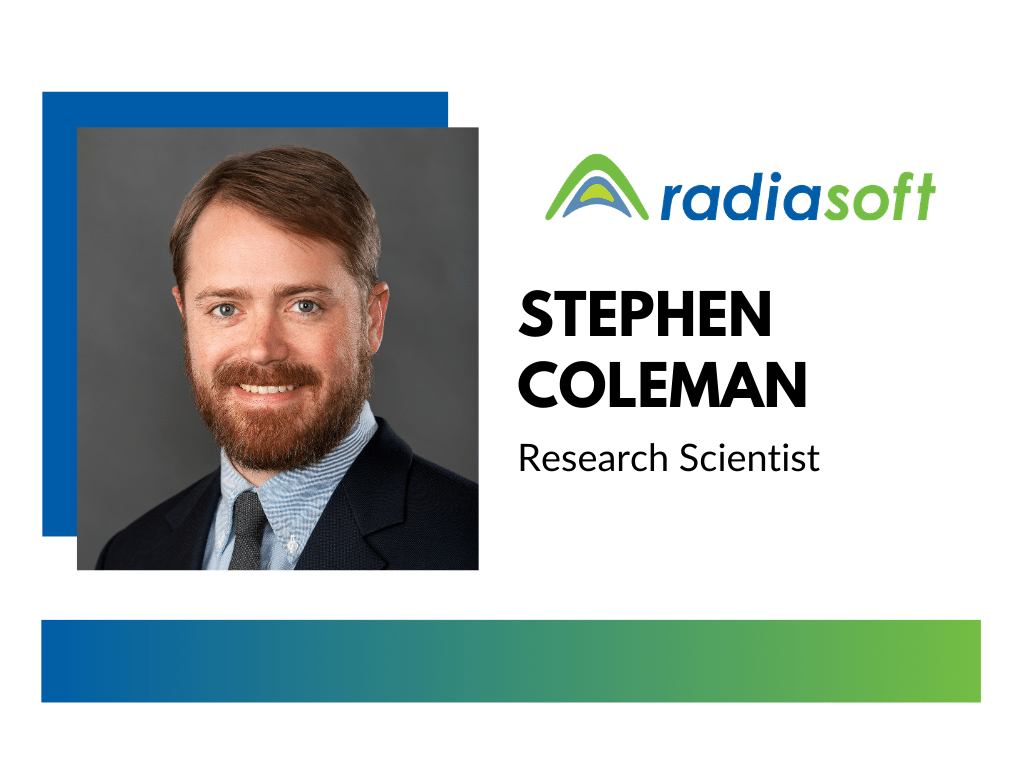
Meet Your Research Scientist: Stephen Coleman, PhD
Meet Your Research Scientist: Stephen Coleman, PhD
Curious about our team of stellar research scientists here at RadiaSoft? We’ve got you covered—meet the team, one-on-one, in this ongoing Q&A series. Every month, we introduce you to another of RadiaSoft’s scientists and they tell you about their work, background, and some of the things that make them who they are.
Today, Dr. Stephen Coleman talks about how he got an Erdős-Bacon number, his electron cooling modeling project, and the misconception of physics as a monolith.
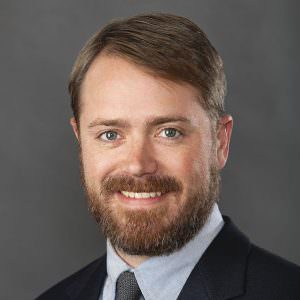
What do you do at RadiaSoft?
I’m a research scientist. I’ve been at RadiaSoft for about a year, which means I don’t have any of my own projects yet. Instead, I’m a worker bee on a couple of other projects. I skew to the computational side of things. Right now I’m working on a plasma simulation project called Flashcap, modeling plasma and capillaries for wakefield accelerators.
I’m also working on another project using the JSPEC app on Sirepo, which is for modeling magnetized electron cooling in accelerators. The JSPEC project is aimed at informing the design for the Electron-Ion Collider (EIC) at Brookhaven National Lab. An upcoming project will have me working with CU, here in Boulder, to build a magnetic focusing horn.
What’s your educational and career background?
I went to the University of Colorado (CU) as an undergrad for physics, then grad school in physics at the College of William and Mary in Virginia. I worked on an experiment called MINOS, which was a neutrino oscillation experiment with a beamline originating at Fermilab aimed at a detector in an iron mine in Northern Minnesota.
After grad school, I got a postdoc at CU. So I came back to Colorado and worked with one of my old professors on a different neutrino oscillation experiment called T2K, in Japan. It’s based out of an accelerator on the east coast of Japan that shoots neutrinos to a detector on the west coast of Japan. I did that for a few years, then got an interesting opportunity to work on a DARPA-funded project also at CU, across the street from where I had been working, but as something kind of like a biostatistician. It was a big career change there for a little while. I did that for about five years.
What’s the biggest misconception about your field and why?
I’m a bit of a generalist, not sure if I’d say I have a specific subfield of physics. I do skew on the computational side of things, but even within that area you can talk to someone about plasma modeling, you can talk to someone else about particle physics modeling, and they’re completely different worlds, even though it’s all physics, all computational.
I guess the misconception would be that it’s monolithic. If you talked to the average person on the street, they don’t know what a physicist does, day in, day out. They might think that you spend your time writing on a chalkboard. But it’s such a rich and varied collection of subfields, some of which align more closely than others. For instance, I have friends at NIST, just down the street from RadiaSoft’s office, who work with table-top laser experiments all day, and we talk past each other when we chat about work. It’s like we’re speaking completely different languages.
Even within accelerator physics, people don’t realize accelerators have industrial and medical uses, that it is not strictly collider-focused. It’s more than CERN, and Fermilab, and SLAC. There are real-world applications like irradiating food for sterilization or irradiating barrels of seeds to get rid of pests.
Where did you grow up?
I grew up just outside of Richmond, Virginia, in a suburb called Chesterfield County, which is on the south side of the James River that goes through Richmond.
Here’s a little fun tidbit: I have an aunt who does genealogy and she’s traced our family back many generations. Among our ancestors there are French Huguenots who sailed to the United States in the early 1700s, and that landed…on the south side of the James River, in what later became Chesterfield County.
Before joining RadiaSoft, what’s the strangest or most interesting job you’ve held?
When I was young, I was a bit of a theater kid and did plays and commercials and movies. (When I was 11, I was in a movie called Major Payne, which is a Damon Wayans’ military academy movie.) I do have an IMDb page. This acting experience means I am one of the rare people who has an Erdős-Bacon number.
Paul Erdős was a brilliant mathematician, very prolific, and he authored tons and tons of different papers with different people. If you can connect yourself—you were an author with someone who was an author with someone who authored a paper with him, then you have an Erdős number of three.
It’s a big thing among mathematicians and physicists to brag about your Erdős number, but at the same time, there’s also your Kevin Bacon number, if you’re an actor. The Erdős-Bacon number is where you add them together. My Erdős number is four and my Bacon number is three, so I have the same Erdős-Bacon number (seven) as Natalie Portman. Then, if you really want to get into it, there’s another number called the Erdős-Bacon-Sabbath number, if you recorded with someone who recorded with Black Sabbath. Not a lot of people with that. I suppose there’s still time for me to get that one. The Erdős-Bacon is rare enough.
Who is your favorite scientist from history and why?
I’d go with John von Neumann. He was a brilliant scientist who published a lot in math and physics. He was part of the Manhattan Project and eventually landed at the Institute for Advanced Study at Princeton, where he was basically given the freedom to do whatever he wanted. It’s amazing how much of our modern computing structures came from him, from him toying around with ENIAC, the existing supercomputer at that time. We owe Monte Carlo simulation to his physics and computational insights. There’s some quote from Hans Bethe about how von Neumann was evidence that there was a higher species of human.
Tell us about one of your current projects.
I’m working on a project called MCool that uses JSPEC to model the cooling of ion beams in the EIC. In the EIC, we want to keep the emittance down as the ion bunches cycle and speed up. You can do this by co-propagating an electron bunch with the ion bunch in a strong magnetic field.
It’s a tough project because there are only a few times that this technique has even been tried and there’s not a lot of agreement, even in the theoretical community, about how you determine what the magnitude of the cooling will be. But being able to computationally model that with any of the friction force models that there are, and being able to tell a computer to optimize for a given set of conditions, is going to be crucial to designing the new cooler in the EIC. Essentially, I’m working on one of the tools that will hopefully let us do that.
What is a talent, secret superpower, or fun fact about yourself that people wouldn’t guess?
I’m a decent musician and play a few instruments. I was in the CU marching band, playing trumpet. I can also play guitar and used to play upright bass in a jazz band.
What’s your favorite Slack emoji and why?
I like the Homer Disappearing Into Bushes we have on our Slack. The company as a whole is really collegial, so there’s little to no workplace drama at all. I think it’s funny to drop Homer Disappearing Into Bushes sometimes to pretend there’s a big controversy that I don’t want to be a part of.

What’s something you wish people understood better about RadiaSoft?
Between all the scientists we have on the team, we have both a lot of areas of collaborative overlap and a whole lot of unique specialties. We are representative of how diverse the field of knowledge is in real life. This means that we can draw upon institutional knowledge for problem solving, and can come up with creative ways to try to solve a problem that draws on experience outside of a particular sub-field. Basically, any problem a client might have, we have the right people to figure it out.
